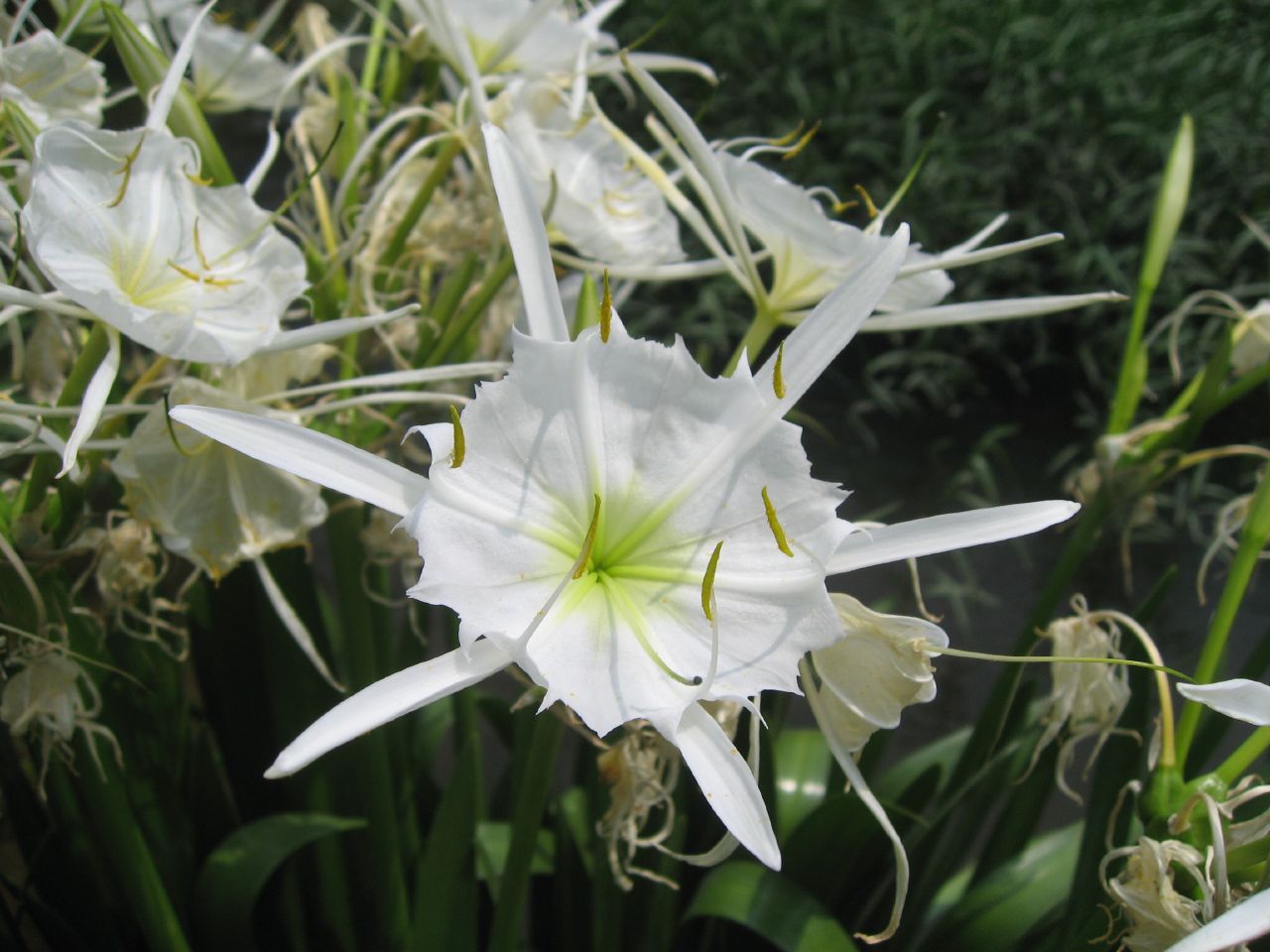The Cahaba lily (Hymenocallis coronaria) is a stunning and distinctive flower that grows only in the southeastern United States, particularly in the Cahaba River basin in Alabama. This flower is recognized for its delicate white petals and long, slender leaves. The flower usually measures around 5-7 inches in diameter and exudes a light, sweet fragrance.
The Cahaba lily is a perennial plant, meaning that it returns year after year. It grows in various habitats, including swamps, floodplains, and other wetland areas. It typically blooms in late May or early June, and the flowers are pollinated by a variety of insects, such as bees and butterflies. The plant has a dormant period in the winter, during which the leaves and stems die back and appear dead.
One of the most exciting aspects of the Cahaba lily is its reproductive strategy. Unlike many plants that produce seeds that can be dispersed by wind or animals, the Cahaba lily reproduces by producing offsets or “bulblets” on its roots. These bulblets eventually grow into new plants, which can then produce their bulblets, and so on. This allows the Cahaba lily to spread and colonize new areas over time. They usually require the slats of the rocky riverbeds to wedge themselves in place.
Due to its limited range, the Cahaba Lily is considered a rare lily species. It is estimated that only around 2,000 individual Cahaba Lilies are growing in the wild, making it a truly unique and special flower.
Despite its beauty and ecological importance, the Cahaba lily is threatened by various factors, including habitat loss, pollution, and overcollection. The plant is listed as “vulnerable” by the International Union for Conservation of Nature (IUCN) and is protected by state and federal laws in the United States. Habitat loss is a significant threat to the Cahaba lily, as the wetlands and floodplains it depends on are often drained or developed for other purposes. Pollution and other forms of habitat degradation can also harm the plants and the animals that rely on them.
There are several things that individuals and communities can do to help protect the Cahaba lily and other native plants:
- Support organizations and initiatives that protect and preserve natural areas, including wetlands and floodplains. These organizations often rely on donations and volunteers to carry out their work, and there are many ways to get involved.
- Learn about native plants and their ecological importance, and share this information with others. This can help raise awareness about their value and the threats they face.
- Avoid collecting or disturbing native plants, and respect laws and regulations that protect them. This includes not picking flowers, digging up plants, or trampling on habitats.
- Plant native species in your yard or garden and encourage others to do the same. This can help create a habitat and provide food and shelter for native animals.
By taking these actions, we can help preserve the beauty and ecological value of the Cahaba lily and other native plants for future generations. These plants are an essential part of the natural heritage of the southeastern United States and deserve our protection and respect.
